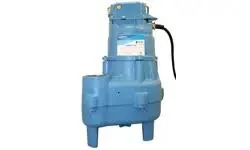English
- Afrikaans
- Albanian
- Amharic
- Arabic
- Armenian
- Azerbaijani
- Basque
- Belarusian
- Bengali
- Bosnian
- Bulgarian
- Catalan
- Cebuano
- Corsican
- Croatian
- Czech
- Danish
- Dutch
- English
- Esperanto
- Estonian
- Finnish
- French
- Frisian
- Galician
- Georgian
- German
- Greek
- Gujarati
- Haitian Creole
- hausa
- hawaiian
- Hebrew
- Hindi
- Miao
- Hungarian
- Icelandic
- igbo
- Indonesian
- irish
- Italian
- Japanese
- Javanese
- Kannada
- kazakh
- Khmer
- Rwandese
- Korean
- Kurdish
- Kyrgyz
- Lao
- Latin
- Latvian
- Lithuanian
- Luxembourgish
- Macedonian
- Malgashi
- Malay
- Malayalam
- Maltese
- Maori
- Marathi
- Mongolian
- Myanmar
- Nepali
- Norwegian
- Norwegian
- Occitan
- Pashto
- Persian
- Polish
- Portuguese
- Punjabi
- Romanian
- Russian
- Samoan
- Scottish Gaelic
- Serbian
- Sesotho
- Shona
- Sindhi
- Sinhala
- Slovak
- Slovenian
- Somali
- Spanish
- Sundanese
- Swahili
- Swedish
- Tagalog
- Tajik
- Tamil
- Tatar
- Telugu
- Thai
- Turkish
- Turkmen
- Ukrainian
- Urdu
- Uighur
- Uzbek
- Vietnamese
- Welsh
- Bantu
- Yiddish
- Yoruba
- Zulu
Telephone: +86 13120555503
Email: frank@cypump.com
Nov . 20, 2024 23:54 Back to list
slurry pumping manual
A Guide to Slurry Pumping Principles and Practices
Slurry pumping is a critical process in various industries, including mining, construction, and chemical processing. In these sectors, handling mixtures of solid particles and liquids is essential for efficiency and productivity. Understanding the principles of slurry pumping—along with the right equipment and techniques—can dramatically improve operations. This article explores the primary considerations and best practices for effective slurry pumping.
Understanding Slurry
A slurry is a mixture of solid particles suspended in a liquid, often water. These mixtures can vary widely in terms of viscosity, solid concentration, size, and shape of particles. Common applications of slurry include transporting minerals from mining operations, removing waste materials, and facilitating chemical processes.
One of the main challenges when dealing with slurries is their effect on pump performance. Unlike clean water, which can be pumped efficiently, slurries can cause increased wear and tear on pumping equipment, decreased efficiency, and clogging issues if not handled properly.
Key Characteristics of Slurry
1. Concentration The solid content in a slurry affects its density and viscosity. Higher concentrations can lead to more challenging pumping conditions. 2. Particle Size and Shape The uniformity of particles impacts flow behavior. Irregular shapes and sizes may cause blockages and uneven wear on pump components.
3. Viscosity A slurry's viscosity can change with shear rates, making it essential to understand the flow behavior for selecting the correct pumping system.
4. pH Levels The chemical composition of the slurry, including its pH, can affect the choice of materials for pumps and pipes, ensuring resistance against corrosion.
Choosing the Right Pump
Selecting the appropriate pump is vital for effective slurry transport
. Various types of pumps are available, each suited to specific conditionsslurry pumping manual

- Centrifugal Pumps Ideal for low-viscosity slurries, these pumps can handle solids but are best when the particulate size is small and uniform.
- Positive Displacement Pumps These pumps excel in handling high-viscosity slurries and those with larger particles. They deliver a constant flow regardless of pressure changes, making them suitable for consistent feeding applications.
- Submersible Slurry Pumps Designed for mining and dredging applications, these pumps can handle highly abrasive materials and are often constructed from heavy-duty materials to withstand wear.
Maintenance and Best Practices
Routine maintenance is essential for slurry pumps to optimize their lifespan and efficiency. Here are some best practices
1. Regular Inspections Frequent checks can identify wear and tear early, which can prevent catastrophic failures and costly downtime.
2. Proper Installation Ensuring that pumps are installed correctly can prevent unnecessary strain on the equipment and facilitate optimal performance.
3. Monitoring Operation Conditions Keeping an eye on parameters such as flow rate, pressure, and temperature can help identify any deviations from optimal operation, allowing for timely interventions.
4. Training Personnel Operators must be trained in both the technical aspects of slurry pumping and the potential challenges they may face. Knowledgeable personnel can make informed decisions during operations and maintenance.
Conclusion
Slurry pumping is a specialized discipline that requires careful consideration of the properties of the slurry, the choice of pump, and the implementation of best practices. By understanding the underlying principles and investing in proper equipment and training, industries can enhance their slurry transport processes, leading to improved efficiency and cost-effectiveness. Whether dealing with mining, construction, or chemical processes, a thorough grasp of slurry pumping techniques is indispensable for success in the field.
-
Horizontal Split Case Pump with GPT-4 Turbo | High Efficiency
NewsAug.01,2025
-
ISG Series Pipeline Pump - Chi Yuan Pumps | High Efficiency, Durable Design
NewsAug.01,2025
-
Advanced Flue Gas Desulfurization Pump with GPT-4 Turbo | Durable & Efficient
NewsJul.31,2025
-
ISG Series Vertical Pipeline Pump - Chi Yuan Pumps | Advanced Hydraulic Design&Durable Construction
NewsJul.31,2025
-
ISG Series Vertical Pipeline Pump - Chi Yuan Pumps | Energy Efficient & Low Noise
NewsJul.31,2025
-
pipeline pump - Chi Yuan Pumps Co., LTD.|High Efficiency&Low Noise
NewsJul.31,2025










